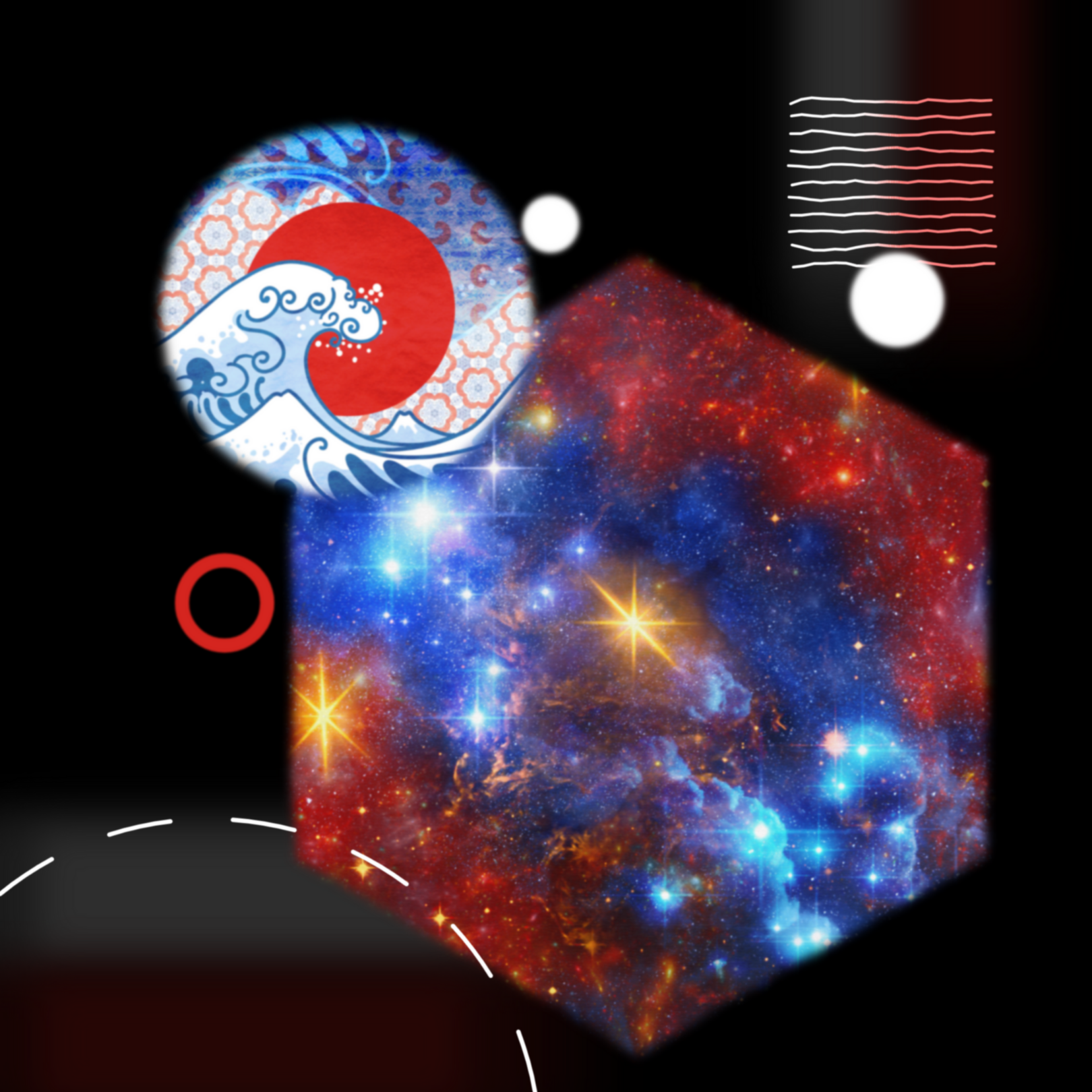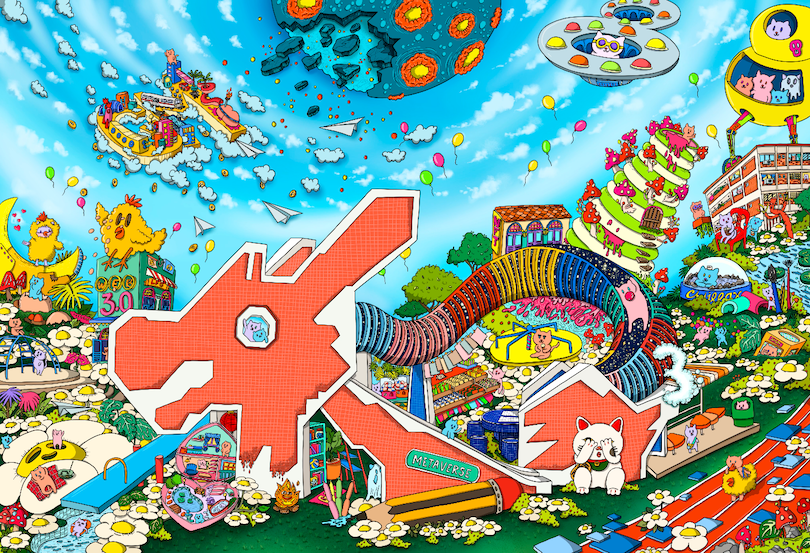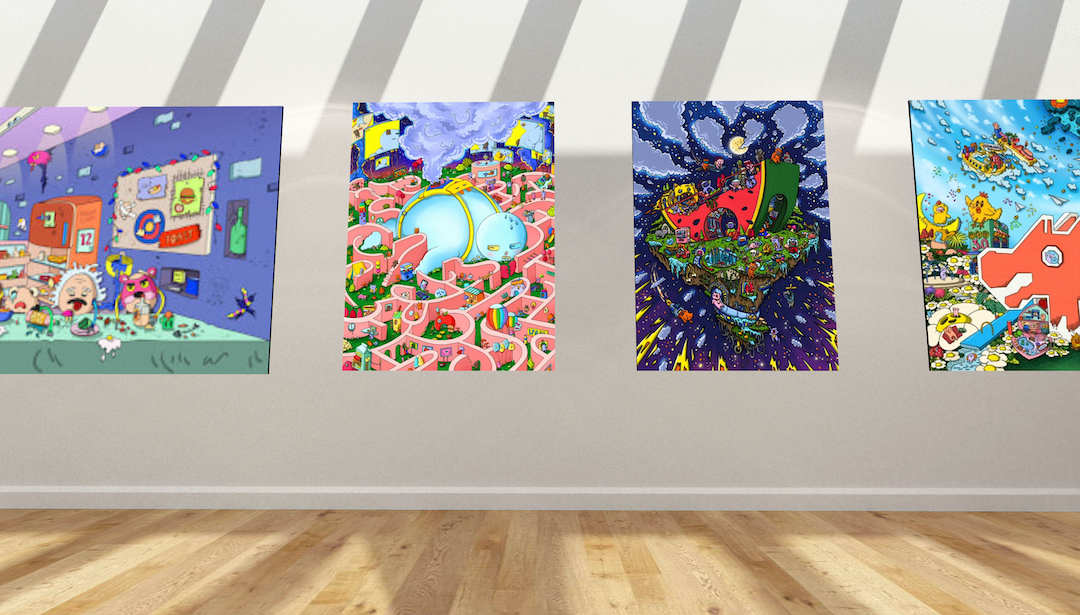When thinking of NFTs (Non-Fungible Tokens), what comes to mind might be ‘that ape profile picture trend’ which took over social media back in 2021. Maybe some confusing cryptocurrency thing, or just plain old digital art with a few extra steps. At least that’s what I thought of.
If you do a quick search on Google, you will find dozens of articles explaining what NFTs are and how they are used — be it for business, finance, or the arts.
Some examples of how NFTs have made their mark on popular culture this year include local fashion brand Love, Bonito’s collaboration with visual artist Kristal Melson, K-Pop entertainment agency SM Entertainment’s ‘æ Girls’ NFT collection, and even an NFT series celebrating the 2022 FIFA World Cup. But what exactly do these digitised works of art mean to the local arts community?

featuring pieces created by artists Mirotta (Japan) and Edurne Andono (Spain) merged into one
using Artificial Intelligence (AI) based on match results. Photo Credit: Ithra World Cup NFT Exhibition
What even is an NFT?
A Non-Fungible Token (NFT) is “an asset on a blockchain with unique identification codes and metadata that distinguish them from each other”. But that is not exactly the easiest thing to understand now, is it?
Think of NFTs this way: when you buy an item, each one comes with its own unique serial number and receipt — that is pretty much what NFTs represent. They are that little certificate of ownership that says ‘hey, this is mine!’. Meanwhile, the Ethereum blockchain serves as the place where the records of all these certificates (which one belongs to who, when they bought it, etc.) are kept.
Sure, anyone can screenshot or copy and paste any NFT online, but the unique certificate cannot be replicated. And it is this ability to own something ‘one-of-a-kind’ that has collectors and investors alike chasing after NFTs, and artists continuing to push the boundaries of what they can create.
How NFTs are being used in the arts industry
NFTs can be used in multiple ways. From being traded in virtual marketplaces, to being showcased in digital art galleries where users can view the art in VR — the creative opportunities are vast. Some are exploring the prospect of using NFTs in the real estate industry.
Did you know? According to the Singapore High Court, NFTs can be considered property!
The Mirror World, a mixed-reality experience developed by Stellar Ace and Revez Motion as part of PLAYfiesta 2022, is one example of the ways NFTs provide new experiences. On display are works from various local NFT artists such as The Hidden Walls, Yanni Chia, and Arai Kreva, in an interactive space titled ‘The Wink Gallery’.
Such spaces are where artists are truly able to let their imagination run free and showcase what is traditionally online in a physical environment — making use of concepts such as gamification to do so. After all, what better way to learn about something than through a game.
Inspired by childhood memories, and themes of play and anime, digital artist, The Hidden Walls, sought to resonate with people through her whimsical and colourful works. She felt the opportunity to exhibit at physical events like The Mirror World was a “blessing” in the way that it allowed the wider public to experience her works.
Sounds about right, what with physical events returning and putting these digital works of art in direct view for the public to experience just like any other physical exhibition.

and find new ways for others to engage with them — with the personal exchange that comes
with buying an NFT and getting that unique record being one. Photo Credit: The Hidden Walls
Encouraging and inspiring mixed media creativity
Even for artists, the NFT space is not a familiar one. But that does not stop them from pushing the boundaries and discovering new possibilities.
“I’ve always loved drawing and art when I was young. And having invested in several cryptocurrency myself, it was a natural decision to try out NFT art when I discovered NFTs,” said The Hidden Walls on the reason they started creating NFT art. Like with any art form, there is definitely a learning curve to creating NFTs, however that does not hinder the determination.
“Despite knowing it would be challenging as I have no prior knowledge to NFTs or know anyone there, I decided to give it a go as it has always been a ‘If not now, then when?’ for me.” The Hidden Walls added.
NFTs can be anything from photos, to videos, songs, three dimensional models… the list goes on and on! As long as it is a digital asset, it can be an NFT. So imagination truly is the limit.

Photo Credit: The Hidden Walls
“NFTs are simply a medium, and art is just the start of it. I believe that artists will challenge themselves with NFTs and try new ways to incorporate the tech to showcase their creativity,” noted The Hidden Walls on how NFTs are enabling artists’ creativity.
For the uninitiated, the art of NFTs may seem complicated. But, as with anything, it all really boils down to the personal value you place on a piece of art — putting all that cryptocurrency and financial jargon aside.
Give it a bit more time and maybe this rising art may yet carve itself an important place in our increasingly digital world. Perhaps even change the way we view and trade art.
Proofread by: Danial Roslan, Liza Fong and Lim Ke Wei
